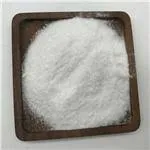The Price Dynamics of Anionic Polyacrylamide Factors Influencing Cost and Market Trends
Anionic polyacrylamide (APAM) is a synthetic polymer that plays a crucial role in various industrial processes, including water treatment, oil recovery, and agriculture. Its unique properties, such as high molecular weight, high viscosity, and excellent flocculation capability, make it an invaluable asset in numerous applications. As demand for APAM continues to grow, understanding the factors influencing its price is essential for stakeholders in various industries.
Overview of Anionic Polyacrylamide
Anionic polyacrylamide is a water-soluble polymer derived from polyacrylamide, featuring anionic functional groups that enhance its flocculating properties. It is primarily used in applications where the separation of solid and liquid phases is required. In the water treatment industry, for instance, APAM is utilized to remove suspended particles and contaminants from industrial effluents and municipal wastewater. In agriculture, it helps in soil conditioning and erosion control, contributing to increased crop yields.
Price Factors
1. Raw Material Costs The primary raw materials for manufacturing anionic polyacrylamide are acrylamide and various additives. Fluctuations in the prices of these raw materials significantly impact the final cost of APAM. Global events, such as supply chain disruptions caused by environmental regulations or geopolitical tensions, can lead to increased costs for manufacturers, which are then passed on to consumers.
2. Production Technology The production process of APAM has evolved over the years, with advancements in technology enhancing efficiency and reducing waste. However, the initial capital investment required for new production facilities and technologies can be substantial. Companies investing in advanced production methods may experience higher upfront costs, influencing the pricing structure of their products.
anionic polyacrylamide price

3. Market Demand and Supply The balance between supply and demand plays a critical role in determining the price of anionic polyacrylamide. As industries recognize the benefits of APAM in improving efficiency and sustainability, demand for this polymer has surged. Conversely, if production capabilities do not keep pace with demand, prices may rise accordingly. Additionally, fluctuations in demand driven by seasonal agricultural practices can also create volatility in APAM prices.
4. Environmental Regulations Increasing environmental concerns and regulations regarding chemical usage impact the APAM market. Manufacturers are now expected to adhere to stricter guidelines regarding the synthesis and disposal of polyacrylamide products. Compliance with these regulations often involves additional costs, which may lead to higher prices for end-users. Furthermore, the push toward sustainable and biodegradable alternatives may foster innovation but could also place upward pressure on prices.
5. Global Economic Conditions Broader economic factors, such as inflation rates, currency fluctuations, and changes in trade policies, can indirectly affect the price of anionic polyacrylamide. For instance, fluctuations in the exchange rate can influence the cost of imported raw materials, impacting overall production costs. Additionally, economic downturns can diminish demand for APAM, potentially leading to price reductions.
Market Trends and Future Outlook
The anionic polyacrylamide market is anticipated to witness steady growth in the coming years. The water treatment sector, in particular, is driving this growth, propelled by increasing urbanization and regulatory pressures to ensure clean water supply. Additionally, the agriculture sector's demand for effective soil conditioning agents is expected to rise, bolstering the APAM market.
In light of these dynamics, manufacturers are likely to explore innovative production methods and the development of sustainable products. Collaboration with research institutions for advancing biopolymers that can serve as eco-friendly alternatives to traditional APAM may also influence market pricing structures.
As stakeholders navigate these evolving market conditions, keeping a close watch on pricing trends and underlying factors will be critical. The interplay between supply chain efficiencies, regulatory landscapes, and technological advancements will define the future price trajectory of anionic polyacrylamide. Understanding these elements not only assists companies in forecasting their expenses but also aids in strategic planning to harness the opportunities presented by the growing demand for this essential polymer in diverse applications.

